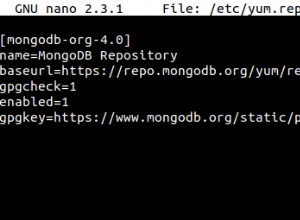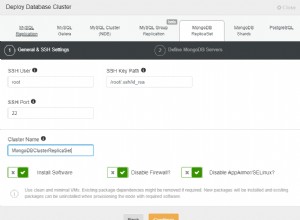Rozwiązałem to za pomocą CustomizedTypeAdapterFactory. Zobacz to pytanie
Najpierw napisz dostosowany adapter:
public abstract class CustomizedTypeAdapterFactory<C>
implements TypeAdapterFactory
{
private final Class<C> customizedClass;
public CustomizedTypeAdapterFactory(Class<C> customizedClass) {
this.customizedClass = customizedClass;
}
@SuppressWarnings("unchecked") // we use a runtime check to guarantee that 'C' and 'T' are equal
public final <T> TypeAdapter<T> create(Gson gson, TypeToken<T> type) {
return type.getRawType() == customizedClass
? (TypeAdapter<T>) customizeMyClassAdapter(gson, (TypeToken<C>) type)
: null;
}
private TypeAdapter<C> customizeMyClassAdapter(Gson gson, TypeToken<C> type) {
final TypeAdapter<C> delegate = gson.getDelegateAdapter(this, type);
final TypeAdapter<JsonElement> elementAdapter = gson.getAdapter(JsonElement.class);
return new TypeAdapter<C>() {
@Override public void write(JsonWriter out, C value) throws IOException
{
JsonElement tree = delegate.toJsonTree(value);
beforeWrite(value, tree);
elementAdapter.write(out, tree);
}
@Override public C read(JsonReader in) throws IOException {
JsonElement tree = elementAdapter.read(in);
afterRead(tree);
return delegate.fromJsonTree(tree);
}
};
}
/**
* Override this to muck with {@code toSerialize} before it is written to
* the outgoing JSON stream.
*/
protected void beforeWrite(C source, JsonElement toSerialize) {
}
/**
* Override this to muck with {@code deserialized} before it parsed into
* the application type.
*/
protected void afterRead(JsonElement deserialized) {
}
}
A następnie utwórz podklasę dla wszystkich klas, które należy wziąć pod uwagę. Musisz stworzyć jedną dla każdej klasy zawierającej długie (w tym przypadku). Ale nie musisz serializować niczego poza długą wartością (i innymi wartościami specyficznymi dla bson)
public class MyTestObjectTypeAdapterFactory extends CustomizedTypeAdapterFactory<MyTestObject>
{
public MyTestObjectTypeAdapterFactory()
{
super(MyTestObject.class);
}
@Override
protected void beforeWrite(MyTestObject source, JsonElement toSerialize)
{
//you could convert back the other way here, I let mongo's document parser take care of that.
}
@Override
protected void afterRead(JsonElement deserialized)
{
JsonObject timestamp = deserialized.getAsJsonObject().get("timestamp").getAsJsonObject();
deserialized.getAsJsonObject().remove("timestamp");
deserialized.getAsJsonObject().add("timestamp",timestamp.get("$numberLong"));
}
}
a następnie wygeneruj Gson za pomocą:
Gson gson = new GsonBuilder().registerTypeAdapterFactory(new MyTestObjectTypeAdapterFactory()).create();




